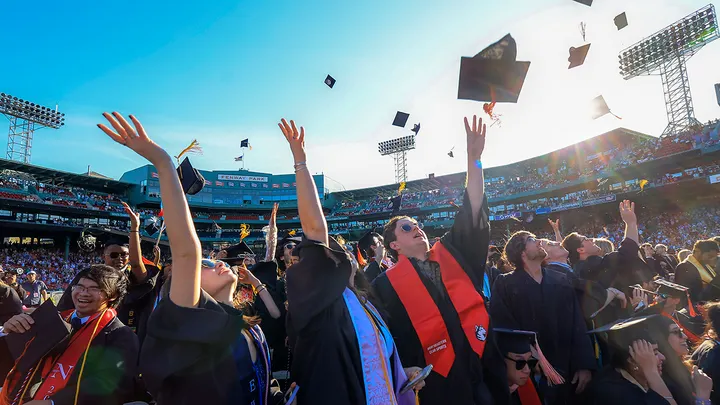With graduation season just around the corner, millions of young adults are poised to join the workforce – and they’re in luck.
A new analysis from the Economic Policy Institute found the Class of 2023 is graduating into the best labor market for young workers since 1953.
The youth unemployment rate for workers between the ages 16 and 24 tumbled to 7.5% in March, according to the study. While that is nearly double the national rate of 3.4%, it also marks the lowest level in 70 years for the unemployed youth.
Historically, young adults in the U.S. are unemployed at 2.6 times the rate of their older counterparts due to their lower levels of education, work experience and skills.
But when businesses faced a pandemic-driven labor shortage, they turned to younger workers with less experience to fill those employment gaps.
“In the pandemic recession, young workers were among those hurt the most because their jobs were more vulnerable to pandemic closures,” the analysis said. “Even so, their unemployment rate is now below their pre-pandemic level.”
On top of that, young workers are now more likely to have predictable work hours, according to the study. Nearly half of young adults are working full time in 2023, an increase of 1.2 percentage points from 2019. A small percentage of workers – 6.8% – have hours that vary in their main job in 2023, down from 7.5% in 2019.
The share of young workers who hold less than one job also declined marginally to 4.2% from 5.1% in 2019.
“On key measures of job quality, young people face a better labor market today than in 2019,” the analysis said. “This represents an extraordinarily strong job market recovery for young workers—especially compared with previous recessions.”
Young Americans are most likely to hold jobs in leisure and hospitality, retail trade and education and health services
Still, the strong job market may not hold.
More than half of economists surveyed by the National Association for Business Economists expect a recession to begin later this year as a result of the Federal Reserve’s aggressive interest-rate hike campaign.
Central bank officials have approved 10 straight rate increases over the past year, bringing the federal funds rate to the highest level since 2007. Hiking interest rates tends to create higher rates on consumer and business loans, which slow the economy by forcing employers to cut back on spending.
The Fed previously projected in March that the jobless rate will climb substantially higher to 4.6% and remain elevated in 2024 and 2025 as steeper rates continue to take their toll by pushing up borrowing costs.
That could amount to more than 1 million job losses by the end of the year.

